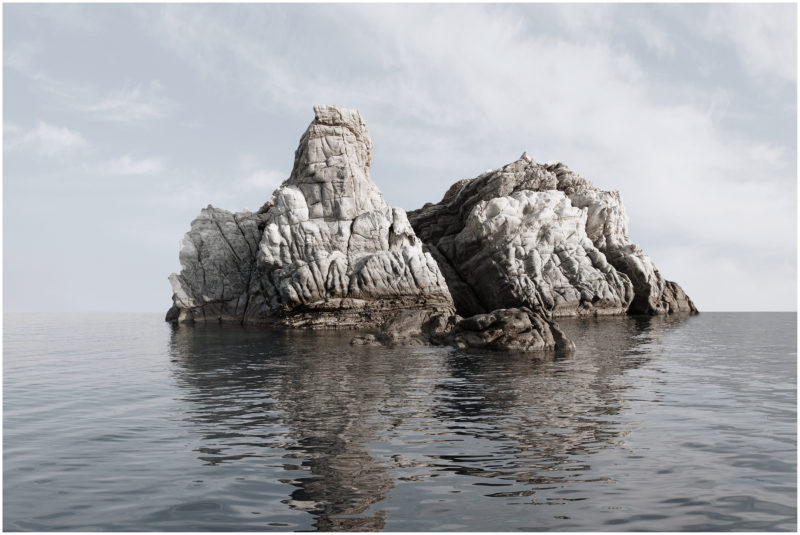I have gotten to know Christina Dimitriadis’s photography in an unusual way: For three summers now, my family has sublet her Berlin apartment and lived with her art daily. Every morning I wake up to I remember all of you, in which a young woman peers inquisitively into a mirror; we cannot see her face at all, just the dark twist of her hair, her tilted neck, and her shoulders. Not only is Mother & Son—a still life of an upholstered chair with a wooden sword plunged into its seat—displayed in my son’s temporary bedroom, but the chair itself is at her kitchen table. I recognize her apartment’s interiors as backdrops for many photos, which often picture the artist too. Staying at her house is a creative ouroboros.
Obviously, all viewers can’t get to know Dimitriadis’s work in this way. But it’s an uncannily perfect introduction to her work’s themes: memory and erasure, and the self in the context of family, country, and the structures they all inhabit, a concept captured in the ancient Greek word oikos. You could say Dimitriadis embodies and negotiates the EU crisis as it stands. Raised in Greece, Dimitriadis spent summers and vacations with her extended family in Hamburg, Salzburg, and Heligoland. The latter, the birthplace of Dimitriadis’s grandmother, is a tiny island in the North Sea, currently owned by Germany but historically a possession of Denmark and the United Kingdom and the site of a Nazi military base during World War II. She has contributed to documenta 14’s journal, which explores the North-South divide across Europe. Reflecting on her southern European heritage in light of the recent EU crisis, the artist has remarked: “Every Greek had to separate from part of his/her own history and create a new identity.”
Dimitriadis’s work has been the subject of solo exhibitions in Berlin, Rome, Warsaw, Athens, and Tokyo. We discussed her latest project, Island Hoping, a series of thirty photographs of small, rocky, uninhabitable Greek islands called skerries in the north Aegean Sea. The photographs are entirely unpeopled, stark, detailed, both painfully clear and inscrutable. The exhibition travels next to Warsaw, and Meta/Books published a catalog of the series in summer 2019.
We had hoped to conduct this interview in person in Christina’s flat, but logistics foiled that plan. Instead, we talked via Skype just days before my arrival in Berlin.
—Jude Stewart
THE BELIEVER: Where did the idea for this series first occur to you? I realize that’s sometimes hard to pinpoint.
CHRISTINA DIMITRIADIS: In a way, I do know, because we have skerries across from our summer house. I used to swim or boat there...
You have reached your article limit
Sign up for a digital subscription and continue reading all new issues, plus our entire archives, for just $1.50/month.
Already a subscriber? Sign in





